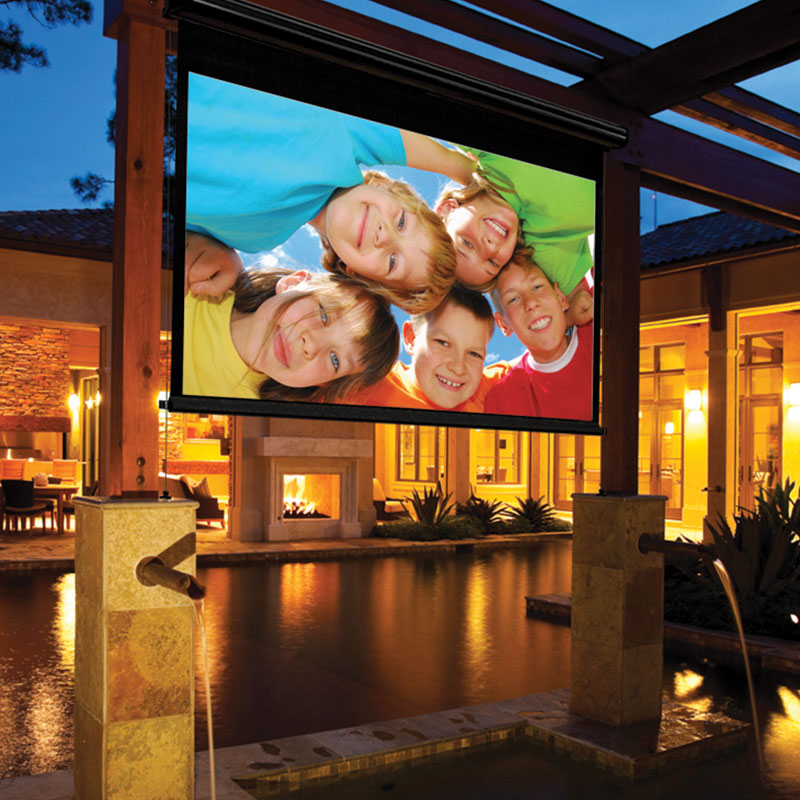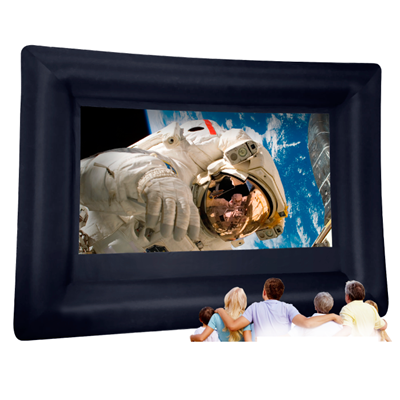It almost goes without saying that "movie night" means
something a little different to most of us than it may have back in the good
old days. Once upon a time, it invariably meant everyone squeezing into the
family car and driving down to the local theater together to take in the latest
new release over a jumbo-sized bucket of buttered popcorn. These days, it's
just as likely to mean relaxing together at home in front of the latest Netflix
release or a hot new rental from Redbox.
That said, modern families that have made a tradition
out of hosting their
own family movie
nights are always on the lookout for ways to keep the experience fresh and
exciting for everyone. Many are even choosing to take their back yards to the
next level by transforming them into charming outdoor theaters with an outdoor projector screen – the perfect
way to enjoy movie night
and make the
most of the balmy summer days to come.
However, it's important to understand that your
viewing experience will only be as good as the equipment you select. Here's how
to make sure yours is everything you need it to be and more:
Understanding
How Outdoor Viewing Differs from Indoor Viewing
Many people looking to create a stunning outdoor
theater already have projectors and projection screens that work perfectly well
indoors. They simply assume that same equipment will perform just as well
outdoors only to be sorely disappointed by an experience that's hardly drive-in
quality.
When you watch a projected movie indoors, it's
generally (and ideally) in a room that's perfectly dark and controlled. This
allows for the type of viewing experience you'd expect in a theater environment;
however, it's never perfectly dark outside, even after sunset. Your projector
will be competing with ambient light from passing headlights, house lights,
street lamps, your fire pit, your barbecue grill, the moon, and even the stars
on a clear night. You'll need to select a projector and screen capable of
offsetting the interference caused by these light sources.
Selecting
Equipment That Can Really Deliver
Start by making sure you're using a projection screen
designed especially for use outdoors, as it will not only be stronger and
better able to withstand the elements, but also may be designed with ambient
light interference in mind as well. You can install a permanent screen that
remains in place at all times or select a portable model that's a snap to
disassemble and bring indoors once the credits roll. The choice is yours!
Choose a projector that is bright enough to project a
strong, clear image that will look just as good outdoors as it would indoors.
The larger your screen, the more lumen power you'll need to have at your
disposal. If you're working with a relatively small screen that measures 9x5
feet, you'll be fine sticking to projectors that pack between 1,500 and 2,300
lumens. However, if you're dealing with a jumbo 40x22 foot screen option
instead, you'll need between 5,500 and 12,000 lumens to deliver a quality,
theater-grade viewing experience.
You also will need to consider the placement of your
projector and screen to determine if you will be using front or rear
projection. A front projection setup may be more common but not necessarily more
ideal as the audience must be configured around the projector and cannot block its
path to the screen.
You will also need to determine which type of
projector to use. A standard throw projector will require you to place the
projector much further away from the screen in order to project a large image.
Short throw projectors allow you to place the projector much closer to the
screen to make a large image, however they often lack any sort of optical zoom.
This means that they need to be placed in a fixed position in order to make a
certain size image.
There are also Ultra Short Throw projectors which
allow you to place the projector extremely close to a screen to produce a large
image. The
Ricoh PJ WX414N for example can produce an 80"
image from less than 10 inches from the screen!

You also need to determine which type of projector screen is best for your outdoor setup. Outdoor projector screens have special surfaces intended to withstand the abuse of mother nature. These surfaces are intended to be easier to clean and are more resistant to the elements.
You will also need to decide on what type of screen to get; inflatable, pop-up, folding frame, or DIY style screens all work well for an outdoor theater and all are portable for easy setup/take down.
If you want a permanent outdoor setup, Draper offers the Nocturne Series E (electric) and Nocturne Series C (manual) lines for a truly impressive outdoor theater system.

Looking for something that is easy to take down and setup? Perhaps an inflatable screen is more up your alley.

Click here to view all of our outdoor screens
Last, but definitely not least, select equipment from
a reputable manufacturer and purchase from a vendor you know you can trust.
What
Else Do You Need to Know?
Don't simply assume that an outdoor projector capable
of projecting high-lumen images is going to be too large and too heavy for
comfort. Today's outdoor projectors are
not
the same as the ones that were standard even five years ago. Back then, it
wasn't uncommon for a 5000 lumen projector to weigh a whopping 90-100 pounds.
These days, a projector that is just as powerful or more weighs in at a mere 10
pounds on the average. Much easier to manage and certainly manageable for home
or personal use! That said, don't let concerns about potential size or weight
stop you from investing in a projector with a high enough lumen capacity for
your needs.
You'll want to make sure you understand the importance
of keeping your outdoor projector properly maintained as well. Outdoor
environments bring factors like dust and wind to the table, making proper
filter maintenance absolutely critical. Get in the habit of cleaning your
projector's filters after each use to ensure that high pollen counts, wayward
dust particles, or even smoke from your backyard barbecue never get the best of
your projector. Dirty filters can quickly lead to lasting damage or chronic
overheating, ruining your investment.
At the end of the day, the key to an unforgettable
outdoor theater experience is quality projection equipment that is up to the
task and proper maintenance of that equipment once you have it. Explore your
options today and make it a summer to remember!